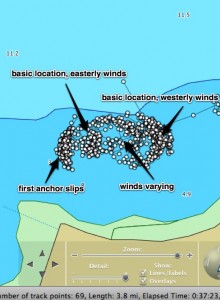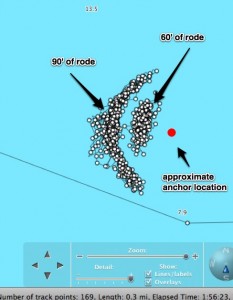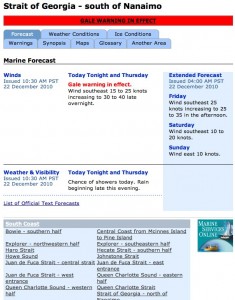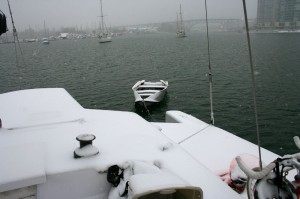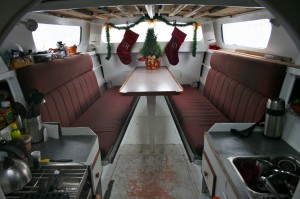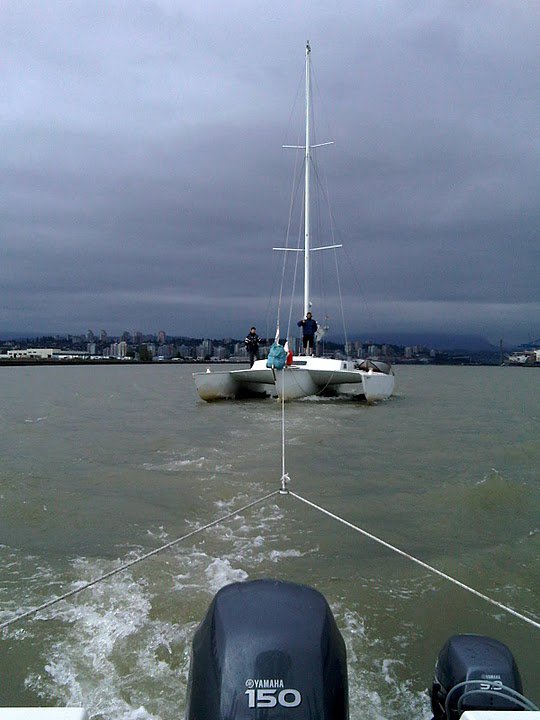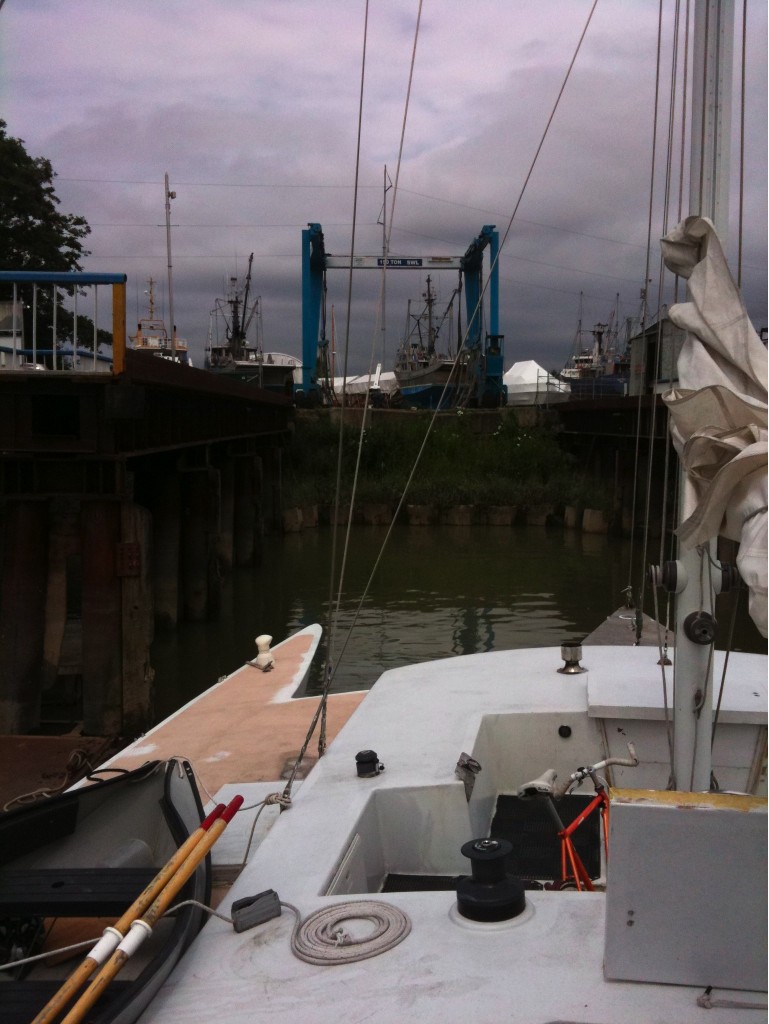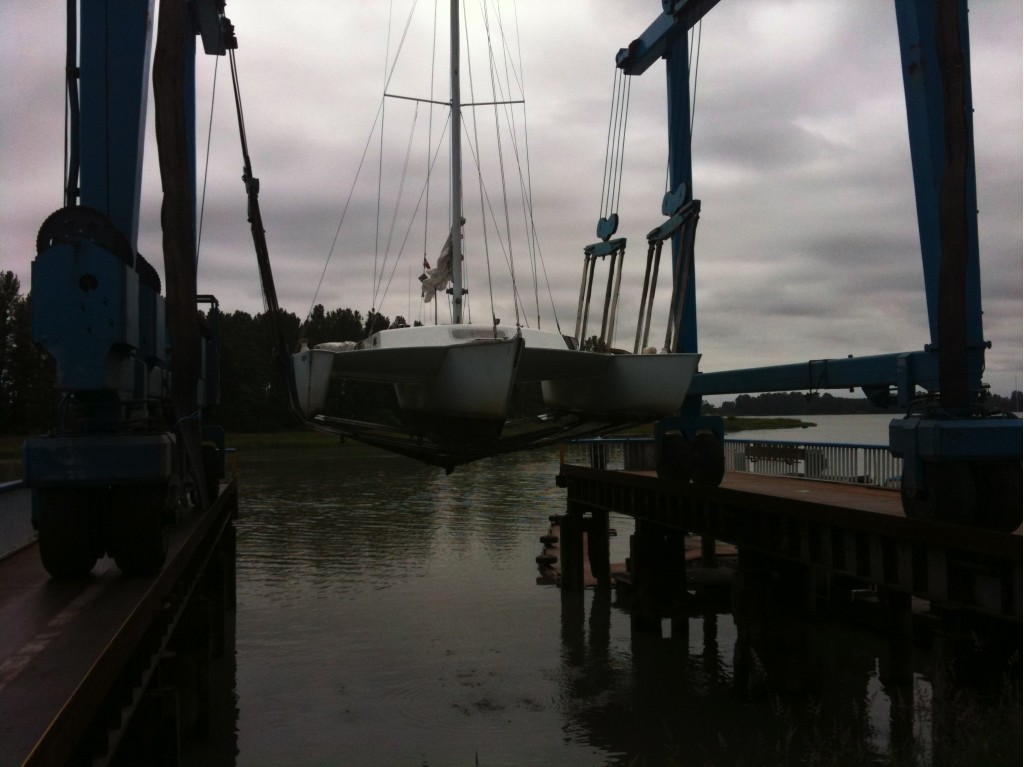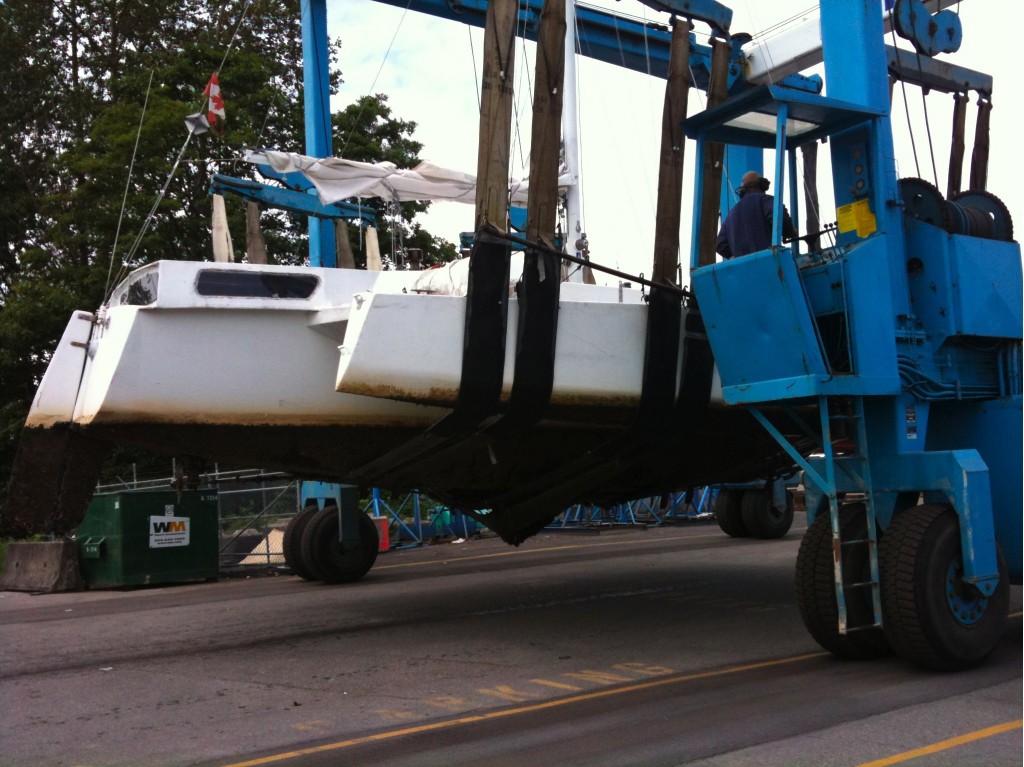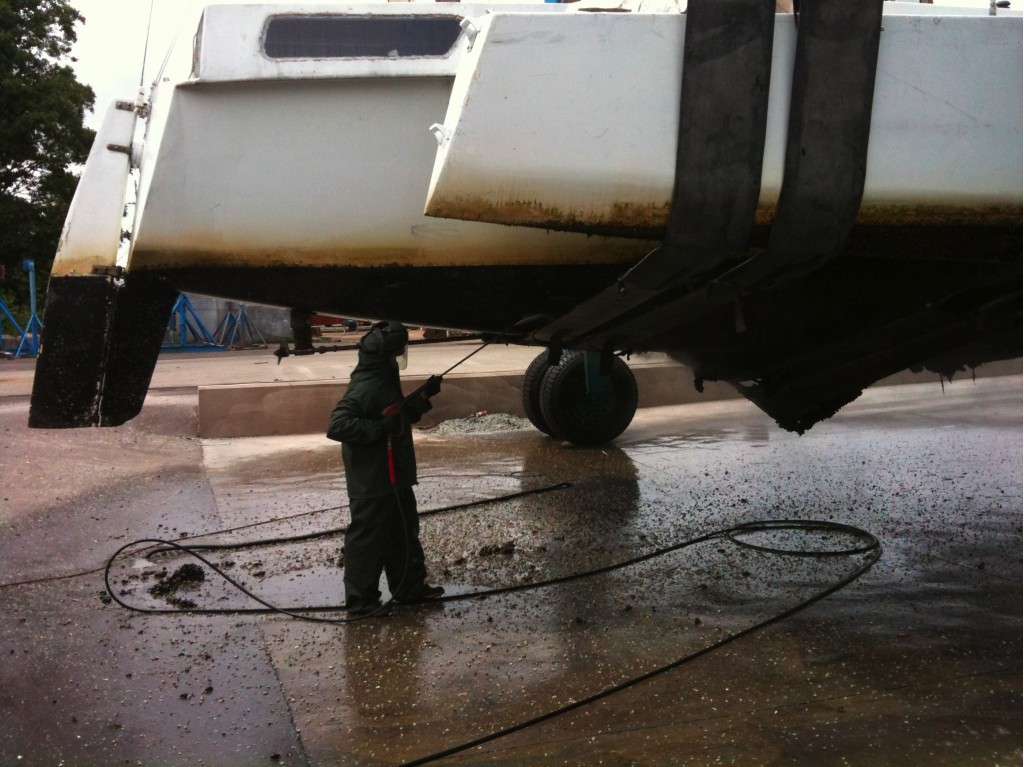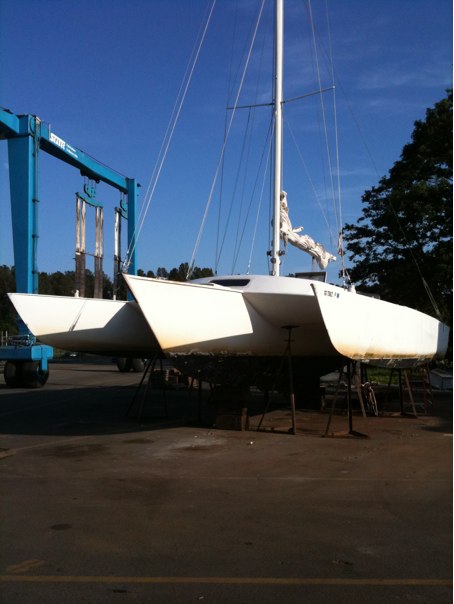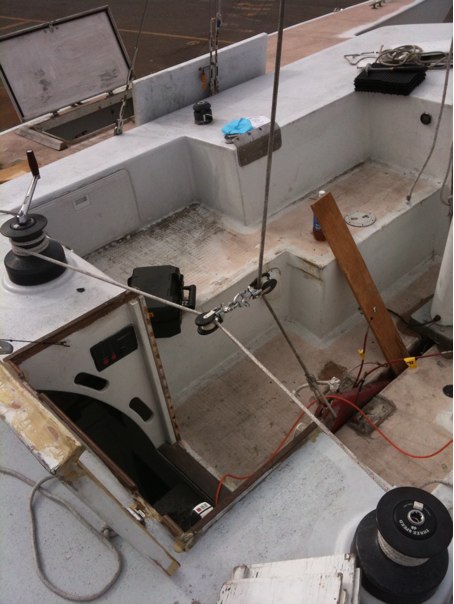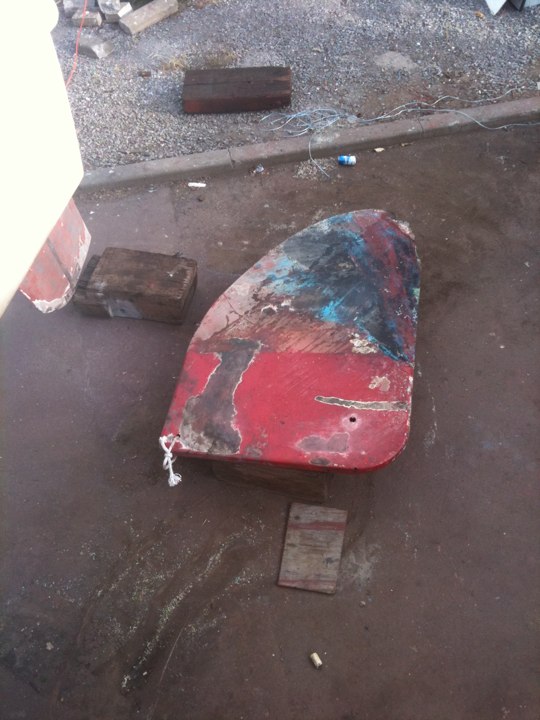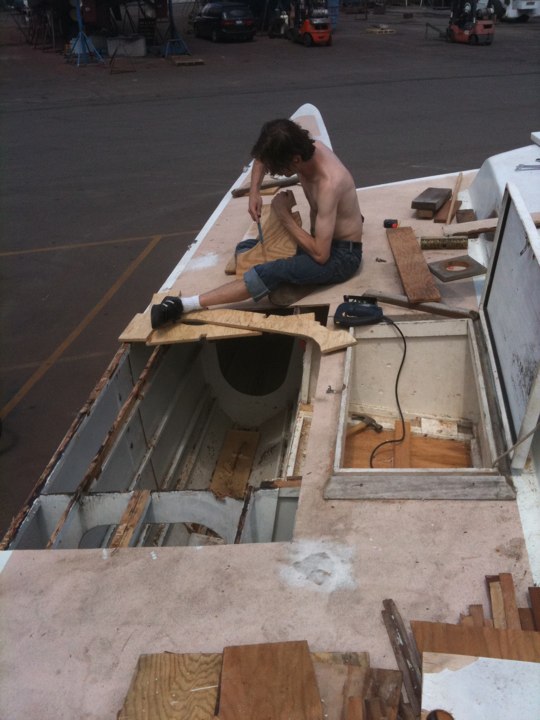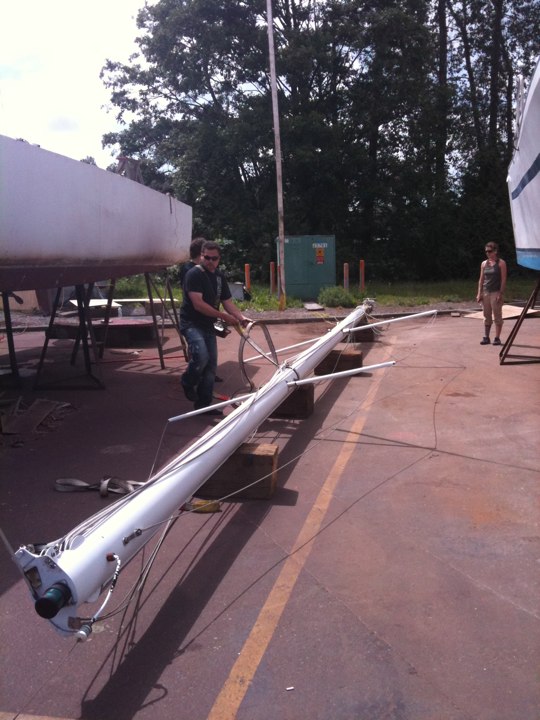If nothing else, living aboard is a constant source of new practical information. For instance, did you know that while landing a motored zodiac on a beach in two foot breaking waves is simple and straightforward, disembarking from that same beach can be deceptively difficult?
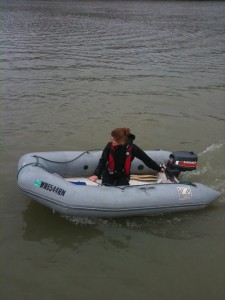
The strong northwesterly winds that started early this morning had us bobbing around quite a lot, and while Miya put up a brave face for a few hours eventually it became clear that she’d be a lot more comfortable (and get more work done) on the shore. We dressed in full foul-weather gear, bailed out the dinghy from the night before, and aside from the tricky part – getting down from the tall side-decks of Tie Fighter into a dinghy that’s rising and falling almost a meter with every wave – the trip to shore went smoothly. We gunned the throttle on the down slope of a cresting wave about three meters from shore and surfed gently onto the beach, tilting up the outboard motor on its hinge just before the blades hit the sand.
I bid Miya farewell and started to drag the zodiac into the water but the first waves met crested up and over her bow, dropping a few inches of seawater into the little boat. I laughed it off and pushed through anyway, dipping a paddle into the water to taker her out to sea the required three or four meters so that I could start the outboard motor without the propellor hitting the sand. To my surprise and alarm, the blade of the little collapsable paddle snapped cleanly off with my first stroke, and I watched as the plastic blade sank quickly to the bottom. Another set of larger waves took the zodiac sideways and shorewards, and then a larger-still wave broke over the side, filling the little boat almost to the gunwales and pushing her heavily onto the sand. I jumped out, and with Miya’s help dragged her up a few feet up the beach.
They say that the definition of insanity is to do the same thing over and over while expecting different results. For the next ten minutes or so I must have appeared certifiable to the slowly-gathering onlookers, though I couldn’t figure out any other way to get back to Tie Fighter! Without a paddle to help take the boat out past the breakers, the timing would have to be perfect – I’d have to wait for a calm(er) set of waves, push the dinghy out just past the breaking waves, jump in, and try to get the motor started while the dinghy was still in deep enough water. By the fourth try, I was having good luck getting out far enough, but for one reason or another the pull-start of the outboard just wasn’t starting! A dozen or so rapid pulls and the motor finally sputtered to life… just in time for the waves to push me ashore and flood the boat again.
After a fifth attempt, Miya pointed out that I’d torn the crotch completely out of my cheap yellow rain pants. I swapped pants with Miya and gave it another shot – I pushed the little boat out as far as I could, then tried to jump in… my timing this time was poor, and a wave chose that exact moment to crest just past the dinghy, causing the undertow to drag the dinghy out from under me as I jumped. I was now hanging on to the side of the dinghy with my legs in the ocean up to my upper thighs. My rain gear protected me somewhat, but all I could think of was how much harder it would be to stay above if my tall rubber sailing boots were to fill with water. I scrambled aboard as fast as I could, with the water only soaking me to my knees, dropped the propellor into the water, and pulled the starter… and it started!
I motored off the beach slowly, standing in 20cm or so of cold ocean water, soaked and feeling somewhat ridiculous. I made my way back to the safety of Tie Fighter, and Miya watched from the beach until I climbed aboard, on the off chance the Gods of the Sea weren’t done with me for the day and something else terrible happened. It is painfully clear that whoever coined the phrase “up a creek without a paddle” – although clearly ‘river folk’ – was on to something, probably as a result of a bad experience.
You know what they say about experience: it’s the best way to avoid mistakes… and the only way to get experience is to make mistakes. I’m going to chalk today’s events up to “gaining experience”.
